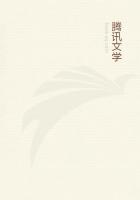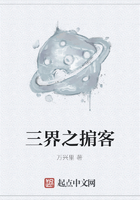That Savours, either as a quality or as the privation of a quality, belong not to every form of the Dry but to the Nutrient, we shall see by considering that neither the Dry without the Moist, nor the Moist without the Dry, is nutrient. For no single element, but only composite substance, constitutes nutriment for animals. Now, among the perceptible elements of the food which animals assimilate, the tangible are the efficient causes of growth and decay; it is qua hot or cold that the food assimilated causes these; for the heat or cold is the direct cause of growth or decay. It is qua gustable, however, that the assimilated food supplies nutrition. For all organisms are nourished by the Sweet [i.e. the 'gustable' proper], either by itself or in combination with other savours. Of this we must speak with more precise detail in our work on Generation: for the present we need touch upon it only so far as our subject here requires. Heat causes growth, and fits the food-stuff for alimentation; it attracts [into the organic system] that which is light [viz. the sweet], while the salt and bitter it rejects because of their heaviness. In fact, whatever effects external heat produces in external bodies, the same are produced by their internal heat in animal and vegetable organisms. Hence it is [i.e. by the agency of heat as described] that nourishment is effected by the sweet. The other savours are introduced into and blended in food [naturally] on a principle analogous to that on which the saline or the acid is used artificially, i.e. for seasoning. These latter are used because they counteract the tendency of the sweet to be too nutrient, and to float on the stomach.
As the intermediate colours arise from the mixture of white and black, so the intermediate savours arise from the Sweet and Bitter;and these savours, too, severally involve either a definite ratio, or else an indefinite relation of degree, between their components, either having certain integral numbers at the basis of their mixture, and, consequently, of their stimulative effect, or else being mixed in proportions not arithmetically expressible. The tastes which give pleasure in their combination are those which have their components joined in a definite ratio.
The sweet taste alone is Rich, [therefore the latter may be regarded as a variety of the former], while [so far as both imply privation of the Sweet] the Saline is fairly identical with the Bitter.
Between the extremes of sweet and bitter come the Harsh, the Pungent, the Astringent, and the Acid. Savours and Colours, it will be observed, contain respectively about the same number of species. For there are seven species of each, if, as is reasonable, we regard Dun [or Grey] as a variety of Black (for the alternative is that Yellow should be classed with White, as Rich with Sweet); while [the irreducible colours, viz.] Crimson, Violet, leek-Green, and deep Blue, come between White and Black, and from these all others are derived by mixture.
Again, as Black is a privation of White in the Translucent, so Saline or Bitter is a privation of Sweet in the Nutrient Moist. This explains why the ash of all burnt things is bitter; for the potable [sc. the sweet] moisture has been exuded from them.
Democritus and most of the natural philosophers who treat of sense-perception proceed quite irrationally, for they represent all objects of sense as objects of Touch. Yet, if this is really so, it clearly follows that each of the other senses is a mode of Touch;but one can see at a glance that this is impossible.
Again, they treat the percepts common to all senses as proper to one. For [the qualities by which they explain taste viz.] Magnitude and Figure, Roughness and Smoothness, and, moreover, the Sharpness and Bluntness found in solid bodies, are percepts common to all the senses, or if not to all, at least to Sight and Touch. This explains why it is that the senses are liable to err regarding them, while no such error arises respecting their proper sensibles; e.g. the sense of Seeing is not deceived as to Colour, nor is that of Hearing as to Sound.
On the other hand, they reduce the proper to common sensibles, as Democritus does with White and Black; for he asserts that the latter is [a mode of the] rough, and the former [a mode of the] smooth, while he reduces Savours to the atomic figures. Yet surely no one sense, or, if any, the sense of Sight rather than any other, can discern the common sensibles. But if we suppose that the sense of Taste is better able to do so, then- since to discern the smallest objects in each kind is what marks the acutest sense-Taste should have been the sense which best perceived the common sensibles generally, and showed the most perfect power of discerning figures in general.
Again, all the sensibles involve contrariety; e.g. in Colour White is contrary to Black, and in Savours Bitter is contrary to Sweet;but no one figure is reckoned as contrary to any other figure. Else, to which of the possible polygonal figures [to which Democritus reduces Bitter] is the spherical figure [to which he reduces Sweet]
contrary?
Again, since figures are infinite in number, savours also should be infinite; [the possible rejoinder- 'that they are so, only that some are not perceived'- cannot be sustained] for why should one savour be perceived, and another not?
This completes our discussion of the object of Taste, i.e. Savour;for the other affections of Savours are examined in their proper place in connection with the natural history of Plants.















